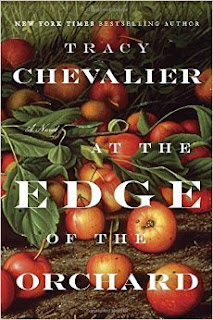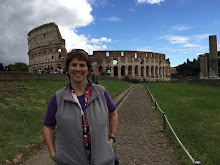I always hesitate to read anything about Laura now that I'm an adult; I guess I don't want my childhood warm memories of reading Laura's books to be diminished by adult thinking. Reading her books are one of my most treasured memories and probably is a huge reason why I am a voracious reader today. Laura had just enough sass and spitfire, yet was a good girl. She reminded me of me, I guess; that it was alright to not always behave. That didn't make either of us little brats, just little girls.
I listened to this selection of letters written by and to Laura for two weeks and I thoroughly enjoyed getting to know the adult Laura. She really was quite talented, a lover of books and a generous spirit. Her letters to children are so sweet, and she says just the right things. There are glimpses of that spitfire every once in awhile; she was no pushover. There are even a few letters from Almanzo to Rose and they are a stitch. He was a man of the West through and through.
The letters Laura wrote after Almanzo died at age 92 in 1949 were poignant and just broke my heart. She talks about her loneliness and how empty the house feels without Almanzo, and how much she misses him. Yet she stayed at Rocky Ridge, traveled to town once a week, visited the library, and connected with friends. She was beloved in Mansfield, MO and really was quite famous the world over. For many years she wrote a reply to every fan letter she received until she was 85 and just couldn't do it anymore. She still read all of her fan mail--hundreds and hundreds of letters from children, teachers, librarians, and parents. The art of letter writing is in full force with Laura; it is such a shame people don't write letters anymore. They are wonderful and bring a voice to Laura that we haven't heard before. The letters between Laura, Rose, her agent George Bly, and her editor Ursula Nordstrom reveal just how much work went into writing the Little House books. It is a fascinating glimpse into the art of creating a novel.
I thoroughly enjoyed this audio book. I will probably buy the book just to have it on my bookcase. I know if I hadn't listened to the audio book I probably would have bought the book, but never read the letters. I'm so glad I listened to them. Tish Hicks as Laura's voice is spot on.
Rating: 8/10 for a wonderful peek into the real Laura Ingalls Wilder as an adult, an author, mother, farm wife, and citizen.
Available in hardcover, e-book, and audio.









